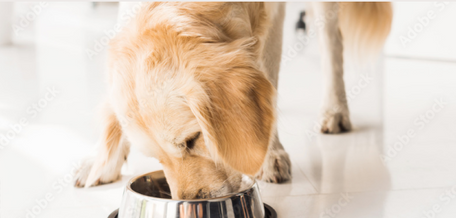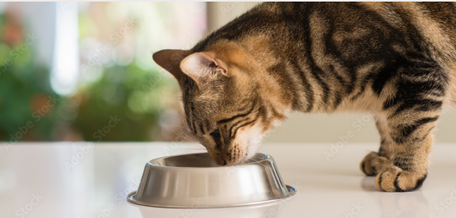Is it Safe to Feed Raw?
This is the first question I get whenever I encounter a customer or talk to a friend about feeding my dog raw dog food. Switching your dog to a raw food diet is a decision many dog owners consider, often because of the health benefits like shinier coats and better digestion attributed to feeding raw. However, the #1 concern held by pet owners is, will it make my dog sick? Trust me, transitioning to raw dog food can feel overwhelming at first. Where do you start? What's the best company to buy from? What kind of raw meat do I use? How much should I give my dog? We hope this blog can help you think through the factors involved, the potential risks and how to make the switch as smooth as possible.
Understanding the Raw Food Diet
A raw food diet for dogs typically consists of uncooked meats, bones, organs, and sometimes fruits and vegetables. The Prey Model Raw diet is an approach that emulates the diets of animals in their natural environments. It avoids unnatural foods, found in kibbles, that dogs would never find in the wild. However, the change from commercial kibble or canned food to raw can be a significant shift for your dog’s digestive system. At BJ's Raw Pet Food we care a lot about your pet's health, we would like to show you why switching to raw dog food is natural and smart.

Potential Risks of Switching to Raw Food
While many dogs thrive on a raw diet, there are potential risks during the transition that could lead to temporary discomfort or illness:
-
Digestive Upset: A sudden change in diet can cause gastrointestinal issues like vomiting, diarrhea, or constipation. Dogs have sensitive stomachs, and their gut microbiome needs time to adapt to processing raw food.
-
Bacterial Concerns: Raw meat can contain bacteria like Salmonella or E. coli, but canned and dry dog meals have frequent recalls due to both bacterias. The truth is, dogs are well-equipped to eat process raw meat. Not all bacteria are harmful, and in fact help us and our dogs remain healthy and strong.
-
Nutritional Imbalances: If the raw diet isn’t properly balanced, your dog could face deficiencies or excesses in key nutrients like calcium, phosphorus, or vitamins. This is especially true for homemade raw diets without veterinary guidance. Let the experts (us, wink wink) take out the guesswork. You can find ready-made, balanced meals right here at bjsrawpetfood.com!
-
Adjustment Period: Some dogs may experience detox-like symptoms (e.g., loose stools or lethargy) as their bodies adjust to the new diet. This is usually temporary but can be mistaken for illness.
How to Minimize the Risk of Illness
To reduce the likelihood of your dog getting sick during the switch, follow these best practices. When I switched my dog Max to raw, a graduation transition was key. And of course I used the best in the game, BJ's Raw Pet Food!
1. Transition Gradually
A slow transition is key to avoiding digestive upset. Over 7–14 days:
-
Days 1–3: Mix 25% raw food with 75% of their current food.
-
Days 4–6: Shift to 50% raw and 50% current food.
-
Days 7–9: Use 75% raw and 25% current food.
-
Day 10+: Fully transition to raw food, monitoring for any issues.
This gradual approach allows your dog’s digestive enzymes and gut bacteria to adapt.
2. Choose High-Quality Ingredients
Source raw food from reputable companies. If preparing meals at home, ensure proper handling and storage to minimize bacterial risks.
3. Consult your vet or a pet nutritionist
Work with a veterinary nutritionist to ensure the diet meets your dog’s needs. We've worked with renowned Pet Nutritionist and Veterinarian Surgeon Dr. Ian Billinghurst for years to bring you the highest-quality, all-natural pet food.
4. Monitor Your Dog’s Health
Watch for signs of distress during the transition, such as:
-
Persistent vomiting or diarrhea
-
Lethargy or loss of appetite
-
Changes in coat or skin condition
If symptoms persist beyond a few days, consult your veterinarian. They may recommend probiotics or other supplements to support digestion.
5. Consider Your Dog’s Specific Needs
Not all dogs are good candidates for a raw diet, always consult your vet before switching.

Benefits of a Raw Food Diet
When done correctly, a raw food diet can offer benefits like:
-
Improved coat and skin health
-
Better dental health from chewing bones
-
Increased energy and smaller, firmer stools
-
Potential relief from certain allergies or digestive issues
We recently came across 2024 U.S. study from Oklahoma University and the University of Florida studying 55 dogs over 28 days, showing that raw dog food is healthier to feed dogs than kibble. Research found higher levels of a mucosal antibody that protects against infection in raw feeding and IAP, another gut protecting antibody.
“The raw fed dogs reflect improved gastrointestinal homeostasis and immune function as well as increased feed digestibility.”
Via: https://phys.org/news/2024-05-dog-kibble-raw-meat-yields.html
Addressing Common Myths
-
Myth: Dogs will always get sick from raw food.
-
Fact: With proper handling and a gradual transition, most healthy dogs adapt well.
-
-
Myth: Raw food is inherently dangerous due to bacteria.
-
Fact: While risks exist, there is arguably more risk of dangerous bacteria exposure while feeding kibble vs. raw.
-
Conclusion
Switching your dog to a raw food diet doesn’t have to make them sick if you take the right precautions! My dog Max is proof. A gradual transition, high-quality ingredients, and veterinary guidance can help ensure a smooth switch. Monitor your dog closely during the process, and don’t hesitate to reach out to a professional if you notice any concerning symptoms. We would love to help you in your transition from kibble to raw, reach out to us to start your raw feeding journey.
Disclaimer: Always consult your veterinarian before making significant changes to your dog’s diet, especially if they have pre-existing health conditions.




















